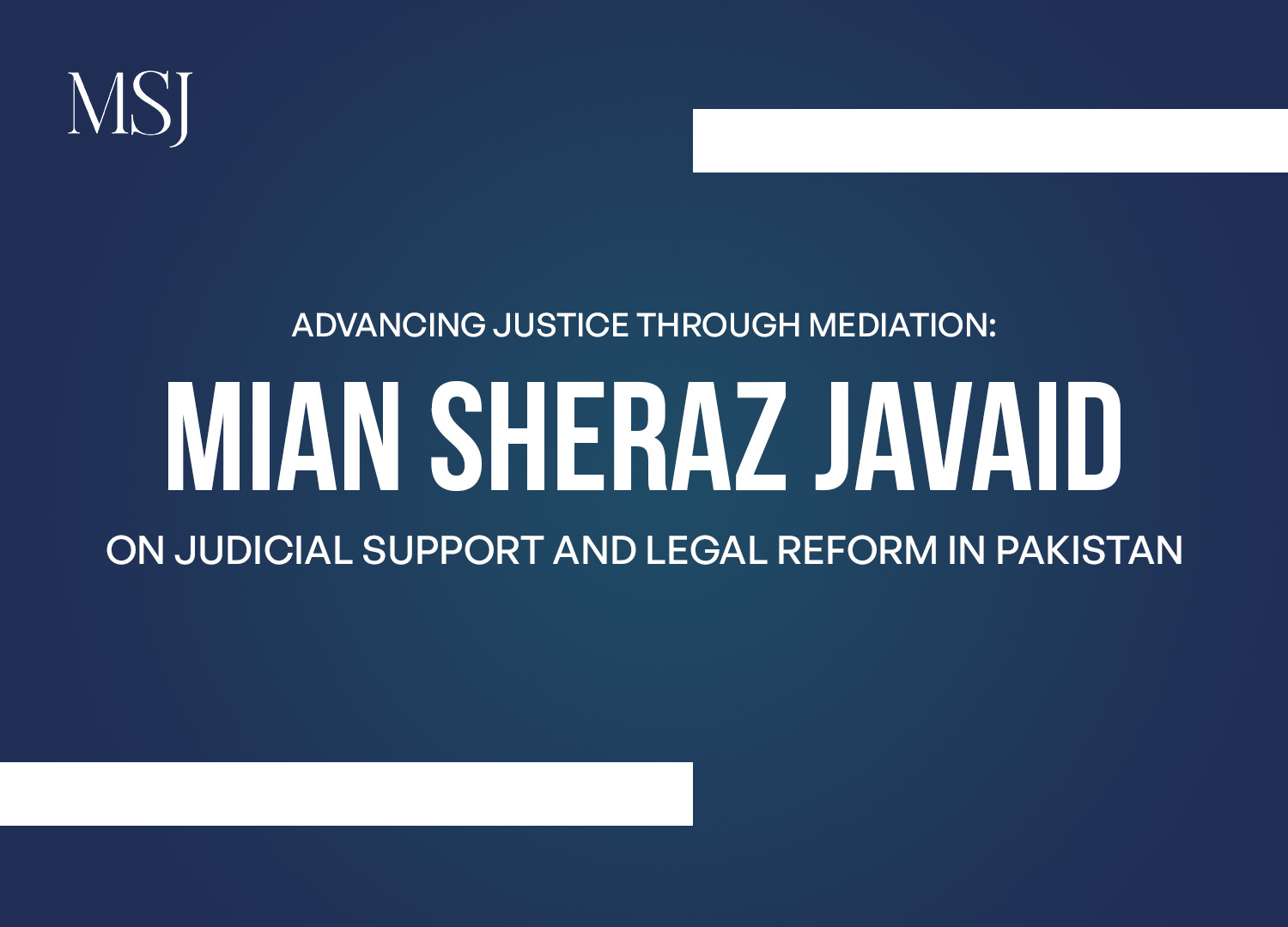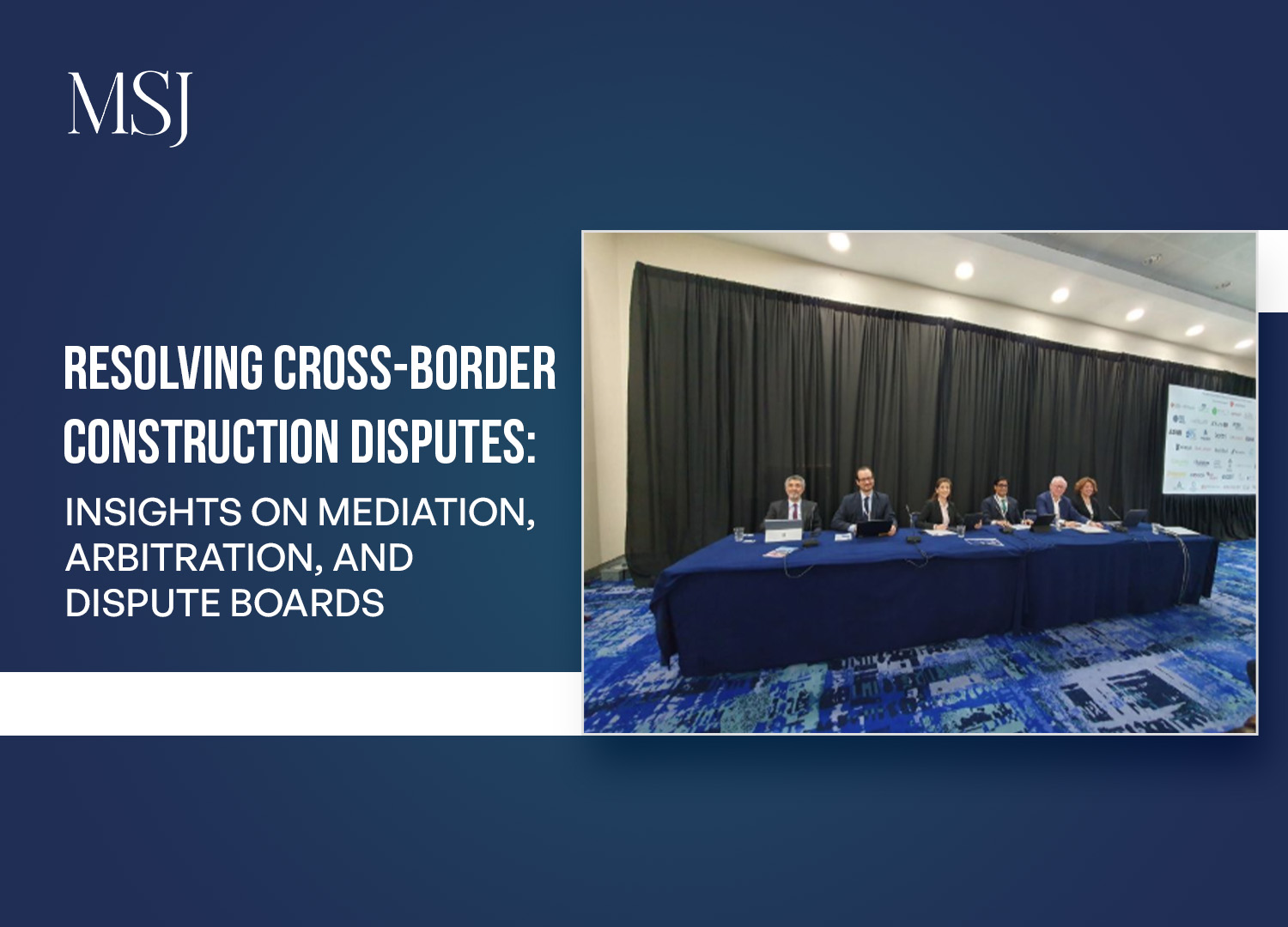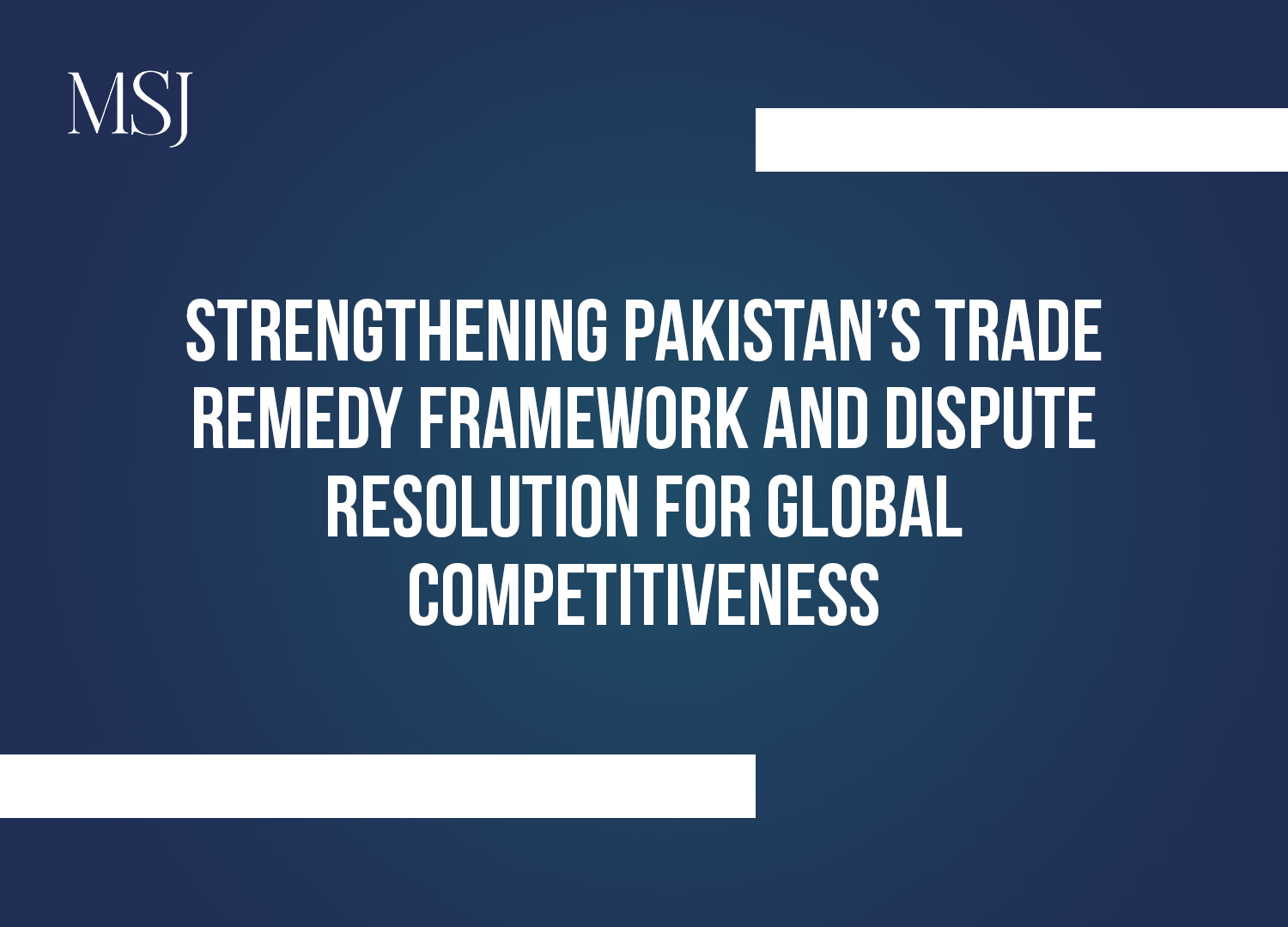Construction Dispute Resolutions: Global supply chain crisis with a focus on price escalation, currency fluctuations and force majeure.
Sheraz commenced his address by portraying how today, the whole construction industry is undergoing widespread, unparalleled challenges, mostly as a result of the global supply chain crisis, which has cascading effects on the execution of construction projects. In this regard, price escalation and currency fluctuation, along with force majeure events, have come to be seen as highly influential factors in project cost, schedule, and overall feasibility, according to him. Sheraz was clear that stakeholders in the construction sector should therefore adopt sound management risk measures, use innovative mechanisms in dispute resolution, and integrate some comprehensive contractual protections to address such challenges.
The Global Supply Chain Crisis
By mentioning an event that has emerged today as one of the leading causes of construction disputes: the global supply chain crisis. Several factors have contributed to it. These include COVID-19, geopolitical conflict, and the war in Ukraine. All of these have caused a severe disruption in the supply chains of materials, a vast increase in costs, and substantial delays in shipments. These disruptions have been sources of worsened inflation and cost increases in energy across the globe. Such conditions have contributed to the already existing challenges that the construction sector is experiencing. Sheraz says it themselves that these things mean higher risks of cost and timeline uncertainty in construction projects, thus setting the ground for disputes.
Sheraz elaborated that shipping freight rates are off the charts and delays in obtaining materials are quite normal. Global container shipping rates have increased more than four times since 2019, resulting in prolonged time in project execution and operational costs. This has forced the contractors and project owners to devise means to manage such setbacks. According to Sheraz's address, construction projects are at the risk of tremendous financial losses, time overruns, and total abandonment if the disruptions in the supply chain do not get fixed.
Similar peak states may be observed before and after site visits. Sheraz mentioned how skyrocketing shipping rates and material procurement delays had become the order of the day. Container shipping rates worldwide have increased more than four times since 2019, causing long project durations and increased operating costs. These delays and increased items have forced contractors and project owners to find ways to buffer against such challenges. According to Sheraz's address, without fixing these supply chain disturbances, construction projects are at risk of tremendous losses in finances, overdue schedules, and abandonment.
Price Escalation in Construction Projects
Sheraz has rightly said that price escalation means an increase in cost during unforeseen reasons, including supply chain disruptions in construction materials and labour. Effects of the global pandemic, geopolitical tensions, energy price hikes, and shortages of critical materials have caused construction cost escalation. These price increases have significantly put pressure on contractors and normally the burden of the financial risk relating to fluctuations in price for labour and material have to be borne by them. As he put it, "if construction contracts haven't provided for the possibility of price increase through incorporation of escalation clauses, the contractor is open to a lot of financial distress, which then leads to disputes, project delays, or even abandonments."
According to Sheraz, he said that price escalation challenges can be overcome through the use of escalation clauses in construction contracts. They allow shifting the risk of increased expenses to the project owner after a certain price threshold has been reached. Shah elaborated further by giving an example for how an escalation clause may allow contractors to recover a portion of cost increases resulting from price surges in materials or labour during the contract period. While these clauses could provide relief, they must be drafted carefully to avoid ambiguity and ensure that they are applied in a fair manner in case of major price differences. Furthermore, his speech covered how both contractors and owners must think carefully about whether a fixed-price contract is advisable because of the drastic conditions related to the ongoing supply chain crisis.
Currency Fluctuations and Their Impact on Construction
Currency fluctuation is yet another salient factor that had much to say in the context of construction. This creates a significant risk factor in the development, especially if the project is of international dimension. However, most relevant was the explanation by Sheraz on how fluctuation in foreign exchange rates could alter the costs incurred on construction materials, equipment, and services sourced from foreign suppliers, which can either increase or decrease the costs incurred in the project. The strengthening of the local currency vis-à-vis the foreign currencies makes project costs decrease, while the weakening of the currency causes cost overruns and, therefore, reduced profits to the project.
These currency fluctuations can affect contract valuations as well when it comes to constructions depending on payment and invoices expressed in foreign currency payments. The more uncertain the exchange rates get, the more uncertainty there is for all parties involved, be it contractor, subcontractor, or project owner. In this case, such adverse effects may prompt them to hedge in terms of forward contracts or into currency swaps against such unforeseen conditions.
Sheraz added that certain construction contracts may also provide some clauses to deal with fluctuations in currency, such as a currency escalation clause to vary the contract price in case of major movements of currencies. Such measures are important to keep projects financially viable despite the vagaries of exchange rates. Hence, the key message from Sheraz's speech was that it is proactive management of risks related to currency that shall ensure that construction projects in a more and more globalised market are financially stable and thus successful.
Force Majeure and Construction Contracts
Force majeure deals with unforeseeable events in the scenario rupturing the parties' performance in contract obligations. Sheraz stated that it more concerns the innovative events beyond the control of parties to a contract that hinder them from performing contract obligations. About construction, he argued, are natural disasters, political upheavals, or wars, among major force majeure events. These usually cause long delays, shortages of materials, and added costs, contributing to bad blood in construction.
Mitigation risk events of force majeure, Sheraz assumed, must necessarily include contingency strategies to construction contracts specifying reactionary measures in respect of that event. These plans may include sourcing alternative materials or labour, acceleration of schedules, or adjustments to the project budget to incorporate unanticipated costs. He emphasised, however, that effective communication and collaboration among all stakeholders are also critical in managing the impacts of force majeure events. Regular updates on the project status, potential disruptions, and alternative plans contribute to keeping the consequences of such events lower and to keeping on line with project goals.
By putting adequate contractual provisions and contingency strategies in place for preparing for force majeure events, Sheraz asserted that better guarantees that construction projects weather the storm of unpredictable disruption and are finished on time and within budget.
Strategic Responses to Global Construction Challenges
Sheraz is telling us about how the construction industry could face challenges like price escalation, currency variations, and eventualities by having risk management strategies and a good dispute resolution. Sheraz recalled how previously litigation and arbitration were solutions for conflicts, which compared to nowadays time, were of shy or no cost-effective solutions in rapidly changing conditions. Hence alternatives such as ADR mechanisms, mediation, and expert determination, have been used in the industry today. In addition, he pointed out that tiered dispute resolution clauses, broad hedging arrangements, and clear waivers in contracts are the boundaries to be drawn down to mitigate the risk scenario and ensure that both contractor and project owner have stepped aside from exposure to costs unanticipated or delay. According to Sheraz, if contracts are worded clearly as to roles and responsibilities of each party and include clauses that allow for adjustments due to supply chain disruption, changes in currency value, and force majeure events, it mitigates the financial and operational impact of such uncertainties on all stakeholders.
Conclusion
In the end, Sheraz spoke of how the construction industry was suffering from significant challenges emanating from global supply chain disruptions, price escalations, currency fluctuations, and force majeure events. He elaborated on how such factors can threaten the very viability and profitability of construction projects and, hence, the need for effective risk management strategies and mechanisms of dispute resolution. Using escalation clauses, hedging strategies, and contingency plans, Sheraz argues, allows stakeholders to negotiate through these challenges and reduce the likelihood of disputes. Additionally, Sheraz argues that alternative dispute resolution mechanisms would go a long way toward resolving disputes in a timely manner such that they do not in any way interfere with the successful delivery of such construction projects at a time when everything seems increasingly uncertain. In this context, proactive planning and collaboration will provide an avenue for Sheraz to argue that the construction industry will bounce back and, through a resilient construction industry, continue to thrive in the face of such increasingly complex challenges.
Considering that the entire world is going through a transformational shift owing to the pandemic, global supply chain disruptions, price escalations, currency fluctuations, and force majeure events are among the many factors that jeopardise the viability and profitability of construction projects. Hence, risk management strategies and mechanisms of dispute resolution are more important than ever. According to Sheraz, by employing such tools as escalation clauses, hedging methodologies and contingency plans, stakeholders will be able to negotiate through these challenges and minimise the possibility of disputes. Besides, Sheraz expressed that alternative dispute resolutions would assist in solving disputes speedily so that such construction projects may not be subjected to the unexpected in the highly uncertain current environment. Such collaboration and proactive planning are what Sheraz believes can place the construction industry on a sustainable path toward increasing resilience and thriving in the face of these incredibly complex challenges.










